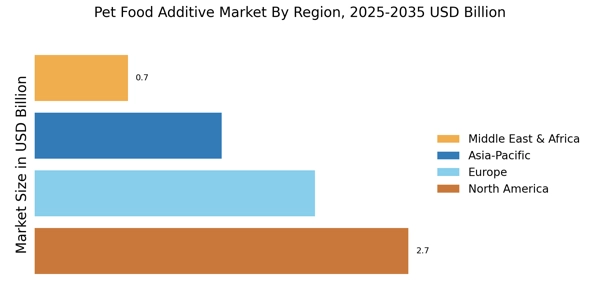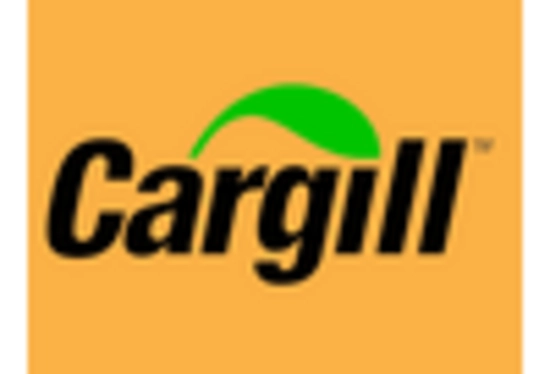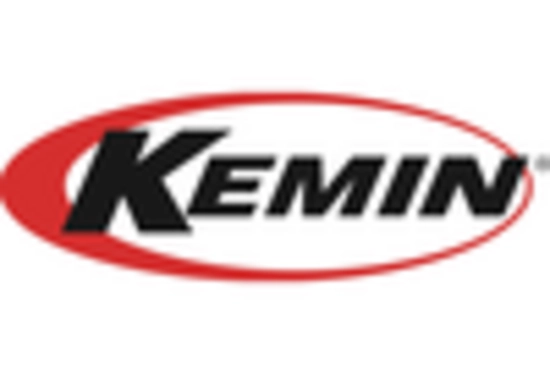Rising Pet Ownership
The increasing trend of pet ownership appears to be a primary driver for the Pet Food Additive Market. As more households adopt pets, the demand for high-quality pet food, including additives, is likely to rise. According to recent statistics, pet ownership rates have surged, with a notable increase in households owning dogs and cats. This trend suggests that pet owners are becoming more conscious of their pets' dietary needs, leading to a greater emphasis on nutritional supplements and additives. The Pet Food Additive Market is thus positioned to benefit from this growing consumer base, as pet owners seek products that enhance their pets' health and well-being.
Regulatory Support and Standards
Regulatory support and the establishment of standards are crucial factors influencing the Pet Food Additive Market. Governments and regulatory bodies are increasingly recognizing the importance of pet nutrition and are implementing guidelines to ensure the safety and efficacy of pet food additives. This regulatory framework not only enhances consumer confidence but also encourages manufacturers to invest in high-quality ingredients and formulations. As regulations become more stringent, the Pet Food Additive Market is likely to experience growth, as companies strive to comply with these standards while also meeting consumer demands for transparency and quality in pet food products.
Sustainability and Ethical Sourcing
The growing emphasis on sustainability and ethical sourcing is emerging as a significant driver for the Pet Food Additive Market. Consumers are increasingly concerned about the environmental impact of their purchases, including pet food. This has led to a demand for additives derived from sustainable sources, such as plant-based ingredients and responsibly sourced animal products. Market trends indicate that brands focusing on sustainability are gaining traction among environmentally conscious consumers. As a result, the Pet Food Additive Market is likely to see a shift towards more eco-friendly products, as manufacturers adapt to meet the expectations of a more discerning consumer base.
Health Consciousness Among Pet Owners
There is a discernible shift towards health consciousness among pet owners, which significantly influences the Pet Food Additive Market. Pet owners are increasingly seeking products that promote health benefits, such as improved digestion, enhanced immunity, and overall vitality. This trend is reflected in the rising sales of functional pet food products, which often incorporate various additives. Market data indicates that the demand for health-oriented pet food additives is expected to grow, as consumers prioritize their pets' health similarly to their own. This evolving mindset is likely to drive innovation and expansion within the Pet Food Additive Market, as manufacturers respond to these changing consumer preferences.
Technological Advancements in Pet Nutrition
Technological advancements in pet nutrition are playing a pivotal role in shaping the Pet Food Additive Market. Innovations in food processing and formulation techniques have enabled the development of more effective and targeted additives. For instance, the introduction of probiotics and prebiotics has revolutionized the way pet food is formulated, enhancing its nutritional profile. Furthermore, advancements in research and development are leading to the discovery of new ingredients that can provide specific health benefits. This continuous evolution in technology is likely to attract more consumers to the Pet Food Additive Market, as they seek products that are backed by scientific research and offer tangible health improvements for their pets.


















Leave a Comment